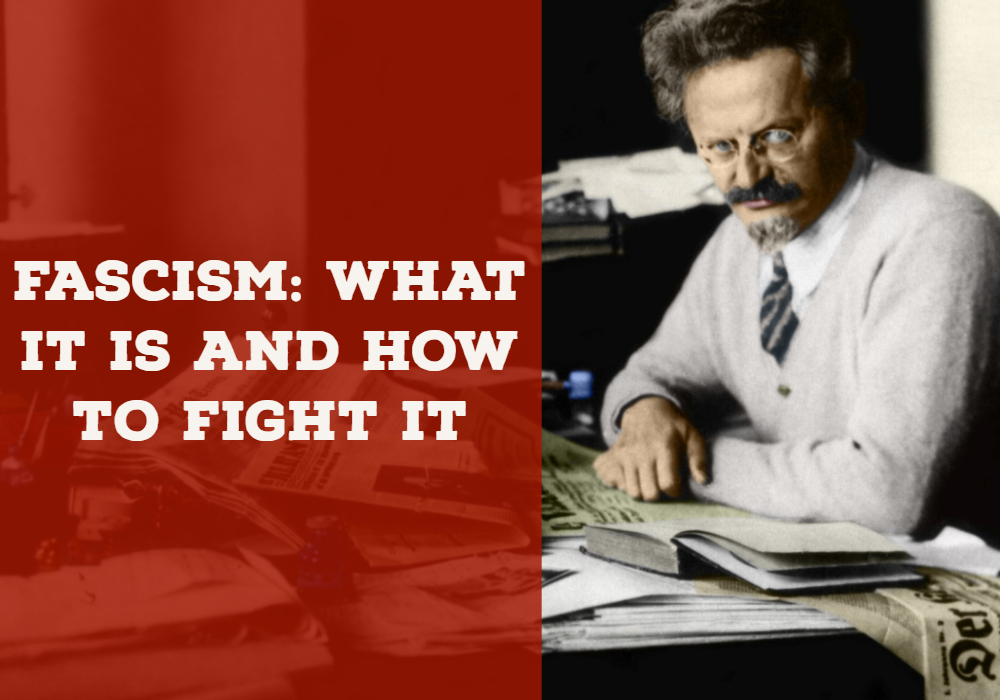Introduction to the Marxist Understanding of Fascism - a thread. Separate thread on perspectives for fascism in America today to follow.
If you get confused on anything, skip to the last tweet and hit us up. We& #39;ll explain more.
If you get confused on anything, skip to the last tweet and hit us up. We& #39;ll explain more.
Popular leftist understanding of fascism today is often a liberal one: the “characteristics” of fascism. Liberals define fascism by collecting a checklist of individual characteristics rather than looking at the whole process of its development.
You meet x number of characteristics? You’re a fascist. Fascists are authoritarian, hostile to democracy, racist, anti-immigrant, anti-Semitic, etc. Trump is authoritarian, hostile to democracy, racist, anti-immigrant, anti-Semitic, etc. So, Trump is therefore a fascist.
Here we approach the limits of formal logic and must use Marxism to reach an understanding. These kinds of takes miss the class nature of fascism. We must examine it dialectically, as a process rather than a static thing. We ask not just what is fascism, but when is fascism?
Fascism arises during a period of intense class struggle, usually following a failed revolution. The working class have power within their grasp, but thanks to poor leadership they fail to take power and smash the bourgeoisie state.
The big bourgeoisie is allowed a moment to regroup, but the revolutionary potential of the working class has been demonstrated for all to see. The ruling class realizes it needs a new weapon to restore stability. That weapon is fascism.
The main base of support for fascism is the petty bourgeoisie. Fascists use divisive reactionary rhetoric mixed with socialist demagogy to build a mass base, attracting the lumpen proletariat and declassed elements, and even backwards elements of the working class as well.
Let’s look at some historical context…
In Italy 9/1920, the workers seized the factories and industries! The dictatorship of the proletariat was there! It lacked only the organization and the Marxist conclusions to declare itself. But the soc-dem reformist leadership didn’t take this final step.
Instead, they retreated as the reformists - who are without revolutionary perspectives - always do.
By 11/1920 the fascist ‘black shirts’ had mobilized into ‘action squadrons’, even killing a newly elected soc-dem councilman and taking over nearby villages in raids. labour leaders were killed, the headquarters of mass workers orgs were destroyed, etc. This was only the start.
It’s the mobilization of a mass base that gives fascism its initial social character. We don’t mean a ‘proud boys’ sized base of support, but a truly mass base of fanatics, financed by the billionaires, moving to destroy the mass organizations of the working class.
The soc-dems in Italy 1920 responded to this reactionary violence by calling for tolerance! They thought to win the favor of the bourgeoisie (and the king) back through a demonstration of a docile working class. Each time the workers wanted to fight, they convinced them not to.
This solved nothing. The soc-dems were just dampening their powder. By the time the they did call for mass action the revolutionary powder simply didn’t catch. Within just 2yrs after its arrival, fascism had taken power. Counter-revolution had won.
Mussolini proceeded with fascism cautiously. Few constitutional changes were made in the first years of fascist rule. The actual changes in the form of government play minor part. The main gist of fascism is the physical breaking up of the working class (and peasant) orgs.
Once he accomplished this, Mussolini bureaucratized the fascist movement.
As soon as fascism finishes with the destruction of all mass working class organizations, it turns against its own base. It cannot keep the political promises it made to its supporters without threatening the wealth and power of the big capitalists who funded their movement.
The fascist state then increasingly begins to resemble any other “normal” military/police dictatorship as it loses its social character.
The same process played out in Germany. After Hitler took power in 1933, the Sturmabteilung (SA) attacked soc-dem, communist, and trade union organizations. All these organizations had armed wings full of working-class militants who were ready to fight the Nazis.
They could have won, but their leaders told them not to fight. The soc-dems told their supporters to trust the courts. The communists told their supporters to wait for the next election. Of course, the bourgeois courts ruled in favor of the Nazis, and the elections were rigged.
The most powerful working-class organizations in the capitalist world were destroyed in a matter of months.
Once their job was complete, Hitler no longer needed the SA. He purged/killed its leaders during the “night of the long knives.” As in Italy, the fascist movement merged into the state bureaucracy and lost its mass character. Germany too came to resemble a “normal” dictatorship.
So, what do we make of all this? What IS fascism?
When defining fascism, we must focus on what’s most important: its social character and function. Fascism is a tool that capitalists use when they want to completely destroy the mass organizations of the workers.
When defining fascism, we must focus on what’s most important: its social character and function. Fascism is a tool that capitalists use when they want to completely destroy the mass organizations of the workers.
Comrades, there’s much more to discuss, like Bonapartism, more historical context, the petty bourgeoise, etc. If you have questions or want to learn more, use the link and someone will get in touch with you. You can also DM me, but I& #39;m not always free. https://socialistrevolution.org/join/ ">https://socialistrevolution.org/join/&quo...

 Read on Twitter
Read on Twitter


